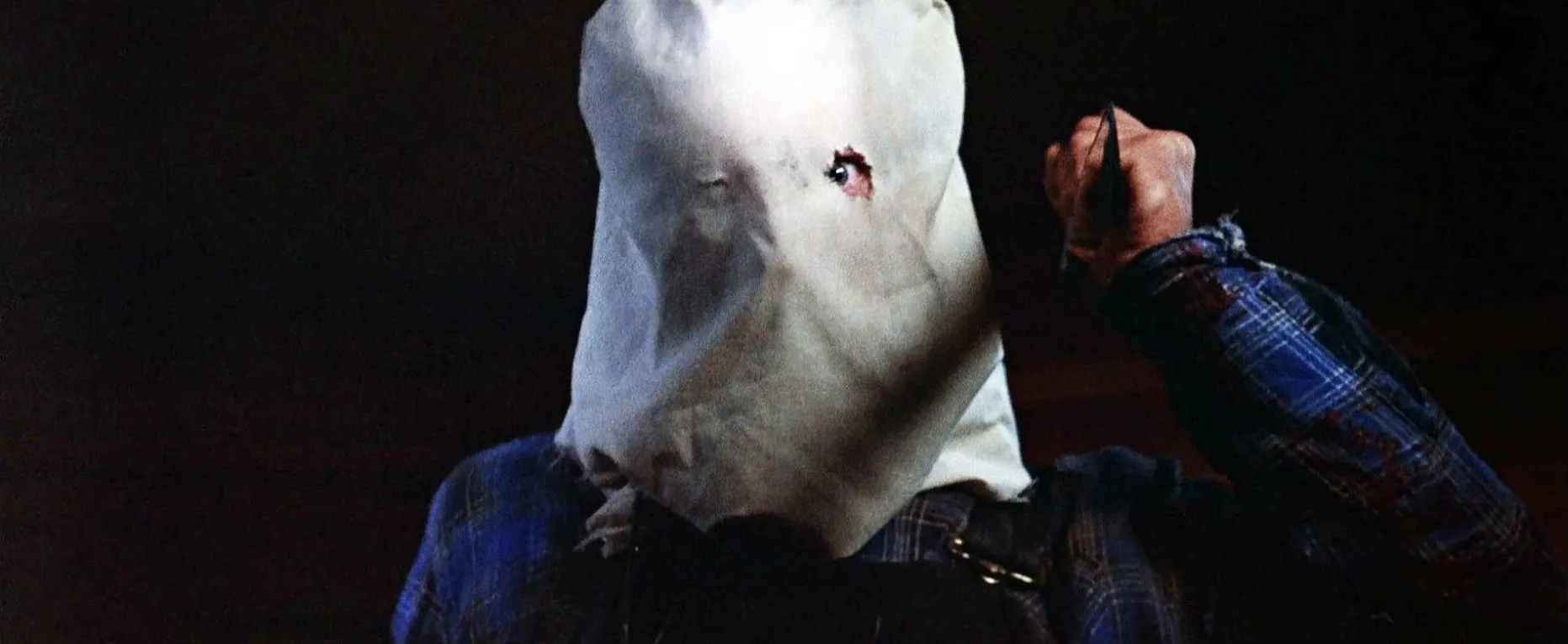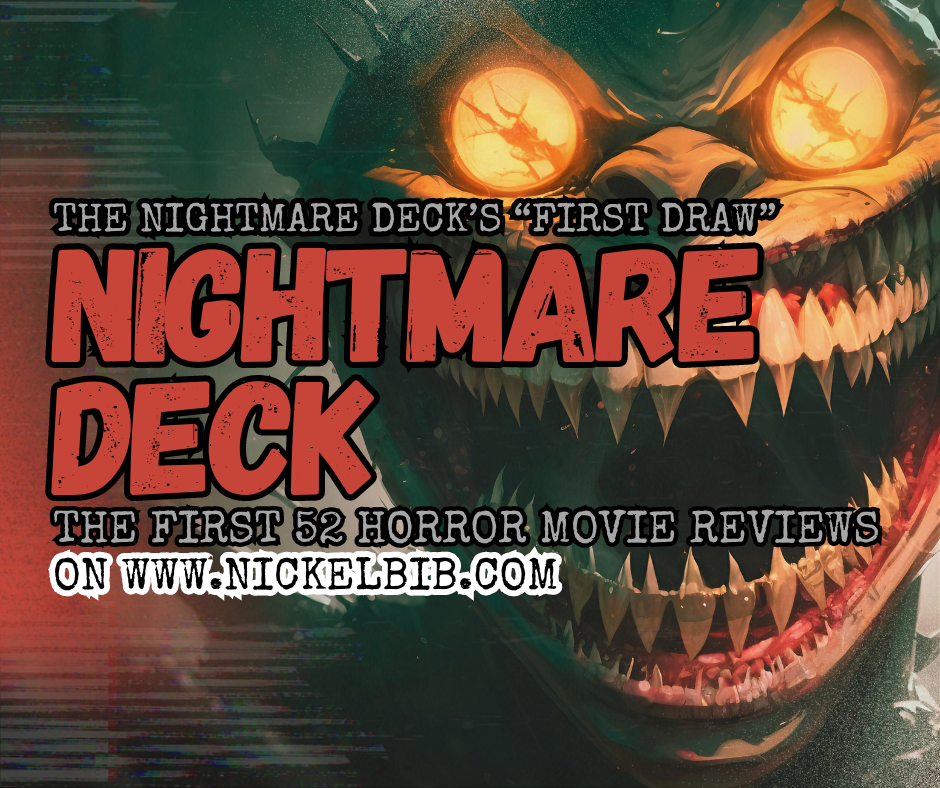With his 1987’s film Prison behind him, Renny Harlin’s directorial career advances forward with the 1988 film A Nightmare on Elm Street 4: The Dream Master, released only a year after his freshman horror effort. Renny Harlin had the honors of following A Nightmare on Elm Street III, a film that is largely considered as the best in the series since Wes Craven’s original classic, and some even outright prefer it. This is with good reason – the third film was a highlight reel of memorable, visually arresting and creative scenes of Freddy Krueger wreaking havoc on the children of Springwood. Granted, I do have some hang ups that I will one day tackle directly in a review later on, but I do agree it is imaginatively one of the strongest entries in the Elm Street series up to that point and overall. The film was a strong sequel and a worthy follow-up to the original.
There is an immediate charm to the early A Nightmare on Elm Street films. After all these years, I am still drawn to the opening credits, the stylized logo, and the overall look and sound that is A Nightmare on Elm Street. The twinkly score and the classic nursery rhymes are obviously hand-me-downs from the original classic, but it is a testament to the value that the A Nightmare on Elm Street brand has. Although I think there is an argument to be made about the quality of the sequels in the horror franchise, they all inherently add something to the franchises’ tapestry. This is for better and for worse, as it can argued whether certain increments are an example of addition by subtraction, or, put better, whether they ultimately cause the series to lose integrity or if they feel like worthy additions.
Thus, I suppose the argument can be made that if ever a director was offered a major opportunity to make a splash in the horror genre and score points with a horror fan like myself, they would never be presented with more an opportunity to do so than with the opportunity to direct the fourth A Nightmare on Elm Street. At the same time, there is a heavy lies the crown expectation to a director offered the chance to helm such a beloved franchise.
Something I wanted to touch on before we dig into the nitty-gritty is the production of this film and the concept of the The ‘Bib and the series’ I do. In an interview, director Tom McLoughlin said that he was offered the opportunity to direct Elm Street 4, but turned it down. Why did he turn it down? Well, he wanted full creative control, similar to what he had when he directed the sixth Friday the 13th film. The producers declined, saying they couldn’t adhere to that. As a matter of fact, they had already begun filming – shooting specific special-effect scenes without a director, citing that they basically knew what they wanted from the films by then. Thus, in some respects, I would equate Renny Harlin’s participation to the film as, perhaps, akin to a director’s participation in the Marvel Cinematic Universe. This is obviously at a much smaller scale comparatively, but, what I mean is, a film director isn’t really allotted a whole, whole lot of wiggle room. Quentin Tarantino equates directing Marvel films as being a hired hand, which I think is appropriate to how I imagine directing The Dream Child must’ve been. This isn’t inherently an issue, but, rather, I wanted to specify that with the The Bib, I choose to use a director’s filmography as a framing device for the series’, and that the series isn’t inherently all about them.
Brian Helgeland and Scott Pierce wrote the script for this film, Steven Fierberg did the cinematography, and so on and so forth. As with every film, it is a team effort. This, I think is important, because of how much of what works with The Dream Child hinges on things like the special effects and the murder sequences portrayed.
Here, for example, are some of what I would single-out – the waterbed scene was creative, taking the core concept of them dying in their sleep and a unique visual aesthetic of the blood of his victim pooling in. I will admit it does show an early indication of how the franchise can play fast and loose with the rules of Freddy Krueger’s abilities, given how the body mysteriously found itself submerged inside the water bed, but I believe Elm Street is a series that is liberating enough to play fast and loose with its concepts, especially if it makes for a cool visual. The scene with Debby’s missed bench press was an amazing, gruesome scene, and the insect bit that followed was both very inspired and very weird. There is a scene set on a beach, likely most recognized for the meme-before-meme’s shot of Freddy Krueger in sunglasses, but, before that, we see Freddy’s claws surfing through the waves like shark fins, in what I thought was a really cool moment. By A Nightmare on Elm Street III, the approach to how these films were made really became less about the whole overall product, and more about making a visually arresting and fun film.
I know there is a lot of debate about where the series went, whether there was a sharp decline in quality and whether Freddy Krueger would have been better off sticking to a more serious presentation. Personally, my opinion has changed over the years. There have been times where I have honestly and truly been on both sides of the argument. Nowadays though, I have really come to love it all. It would be different if I felt the series became reduced to nothing more than lazy, uninspired cash-ins, but that isn’t what I think. If you want to see an uninspired, lazy cash-in, I would look no further than the Elm Street remake in 2010, but, right now, at this point, the films are still churning out creative, unique scenes like no other franchise before it or since. The mentality has certainly changed – the approach to Freddy as a dark antagonist has changed, and now, he has become the series front man. You see the film because you want to see Freddy Krueger do what he does and not inherently because you want to see a horror film. Do I think this film or its approach is as good as the original film? No, I do not, but I do like it.
The story line carries on from the aftermath of A Nightmare on Elm Street 3, which is a smart way to keep horror fans invested year to year as they keep cranking the films out at a rapid speed, but does do a level of damage to how the film is able to stand on its own as a self-contained film. Likewise, too, although the main actress does an amicable job in her role as Alice, the character herself doesn’t have a whole lot of depth beyond a couple of the standard cookie-cutter traits expected for a horror final girl. She isn’t problematic, and she is likable enough that she is par for the course for what the film is asking for, but there isn’t a lot of depth to pull the characters from scene to scene. I think, in some ways, that is likely the biggest criticism that I can levy at this film is that, no matter how many times I have seen it, by the end of the film, it feels like most of what happens spilled out of my head like a turned over cup. I remember the special-effects and I remember the cool scenes, like the visual of all of Freddy Krueger’s victims’ souls pressing up from against his burnt stomach, trying to break free, but I don’t remember very much of happens in between although those moments.
Not all of the special effects and dream sequences have aged well, for instance, one scene of a robotic arm coming out from a classroom desk is corny above all else.
The explanation for how Freddy Krueger is defeated in this film is ultimately plot convenient and feels a little unearned in how it is implemented. At the same time though, it is a fantastic visual, a very neat idea, and among the best shots in the series, even if it is a little cheesy looking back nowadays. I also appreciate that the series obviously found new ways to thwart Freddy, rather than always falling back on one specific idea or method.
I like the film. I know that much, I knew that, as I was watching it, if I wrote anything, I had to say, specifically, that I like this movie. At first, I was thinking that if I took the film and I separated it from the A Nightmare on Elm Street franchise as a whole, I would be more critical of it. I actually think the opposite could just as well be true, however. If I took A Nightmare on Elm Street IV’s scenes and thought of it as, perhaps, a re-worked sequel to, say, the Wishmasher series, for instance, I am certain it would be my favorite Wishmaster film. At the same time, I can recognize that it has certain faults in terms of characterization, storytelling, and pacing, and what tone it exactly is. Comparing Renny Harlin’s film Prison to A Nightmare on Elm Street 4, I believe you can make the argument that his prior film shows more of his directorial chops. It also has a stronger narrative structure than this film. At the same time, this film is just so much more fun than that film, benefited by the special-effects and nightmare sequences, and a consistently fantastic performance by Robert Englund in the role of Freddy Krueger.
As it stands, Renny Harlin has maybe not had what I would call a breakout horror film, or a film that I would single-out as particularly great, but what I will say is that he is two-for-two on modestly decent, and solid horror fare. The story isn’t great, and that is putting it generously, but there is enough finesse and pedigree to every “kill scene” or “nightmare sequence” that it amounts to a respectable increment in the Nightmare on Elm Street franchise.






GIPHY App Key not set. Please check settings